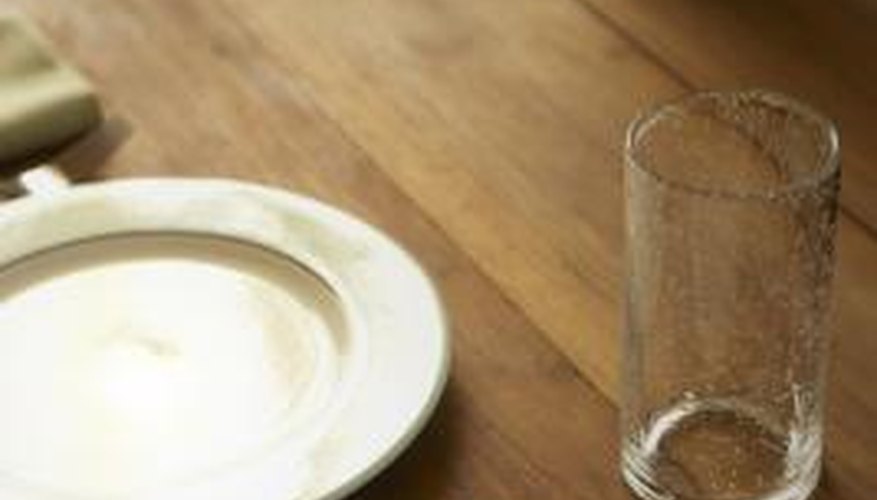A build-up of polish or using the wrong polish can turn your once-pristine wood table into a sticky mess. The stickiness will attract dust, dirt and other debris making the wood table appear dull and dingy. To deal with this problem, you must remove the polish build-up from the wood table.
Vinegar Method
Vinegar will remove the sticky build-up from a wood table without expensive or harsh chemicals. Pour 1 part white vinegar and 1 part water in a plastic container. Saturate a lint-free cloth in the diluted vinegar mixture and wring out the excess liquid. Start at one end of the wood table and begin scrubbing in a circular motion. While scrubbing, apply light pressure and slowly move your way toward the other side of the table. Continue in this manner until you have removed the polish build-up. Once you have removed all traces of the sticky residue, rinse the table with a clean cloth dampened with cool water.
- Vinegar will remove the sticky build-up from a wood table without expensive or harsh chemicals.
- Once you have removed all traces of the sticky residue, rinse the table with a clean cloth dampened with cool water.
Linseed-Oil-and-Gum-Turpentine Method
For a tough polish remover, use linseed oil spiked with gum turpentine. Pour 4 tbsp of linseed oil in a pot and bring to a boil under medium heat. Before the oil begins to boil, fill a 5-gallon bucket with 1 gallon of hot water and 2 tbsp of gum turpentine. With a pair of oven gloves, carefully pour the boiling linseed oil into the bucket and stir with a spoon. Put on a pair of heavy-duty rubber gloves and dampen a rag in the mixture. Scrub the polish off the wood table with the saturated rag. While scrubbing, apply light pressure and move from one end of the table to the other. Buff the wood table dry with a lint-free cloth after you have removed the polish.
- For a tough polish remover, use linseed oil spiked with gum turpentine.
- Before the oil begins to boil, fill a 5-gallon bucket with 1 gallon of hot water and 2 tbsp of gum turpentine.
Mineral-Spirits Method
If the stickiness on the wood table is still present even after you have removed the polish, then the culprit is the finish. A softened finish is typically the result of damage or age and will give the wood table a sticky feel. Removing the finish can get rid of the stickiness, but you may have to strip the table and refinish it if you remove too much of the old finish. Dip a cloth in white spirit and scrub the wood table in a gentle circular motion. Alternatively, use a piece of fine #0000 steel wool dipped in white spirit. After you have removed the softened finish, wipe the table clean with a cloth dampened in cool water and dry with a towel.
- If the stickiness on the wood table is still present even after you have removed the polish, then the culprit is the finish.
- Removing the finish can get rid of the stickiness, but you may have to strip the table and refinish it if you remove too much of the old finish.
Considerations
To help prevent polish build-ups, use a homemade wood-polish recipe that is safe for all wood types. If the table is varnished wood, fill a spray bottle with 1/2 cup of warm water. Add four to six drops of lemon oil, secure the lid on the spray bottle and gently swirl the bottle to mix the oil and water. Mist a lint-free cloth with the mixture and wipe the table. Buff dry with a clean, soft cloth.
- To help prevent polish build-ups, use a homemade wood-polish recipe that is safe for all wood types.
- Mist a lint-free cloth with the mixture and wipe the table.
If the wood table is unvarnished, use a mixture of equal parts olive oil and lemon juice. Wipe the table in long, even strokes with a cloth dampened in the mixture.
